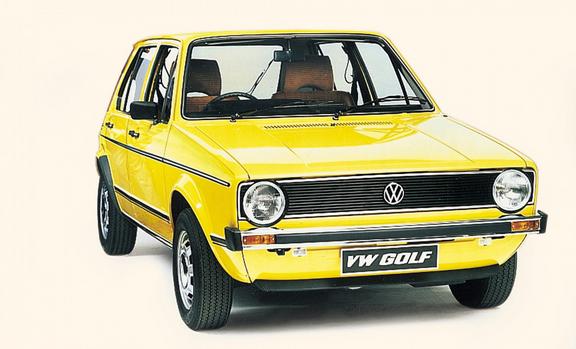
VW is more than the Volla – celebrating 40 years of Golfs in Africa

From 1978 to 2008 Volkswagen’s factory at Uitenhage in South Africa, produced more than 800,000 Golfs, making it the biggest selling, most popular African-built car of all time. But 2008 was also the year when Volkswagen stopped manufacturing the Golf in Africa.
Despite its factory of origin having moved, the Golf remains a very popular local car. Its roots go back to 1974 when Volkswagen launched the Golf Mark 1 in Europe, followed four years later by its introduction in South Africa. The year, the trusty little Golf has been eating African roads for 40 years.
After only 31 months in production the Mk1 had already sold 1 million units and its success would continue in South Africa where the hatch back was launched in May 1978.
Production in Uitenhage started with 65 units a day with a local content of 57%.
Its space-saving front-wheel drive and 1.5-liter four-cylinder cross-mounted, water-cooled engine, with just 70 horsepower delivered impressive performance. The initial launch price of the 1100cc L two-door was just R3985, the LS four-door R4135 and the 1500cc GLS four-door R4940.
During the years after 1978 a number of variants were introduced into the model line-up including a diesel version at the end of 1978 and the high performance 1600cc Golf GTS with its matt black bumper, extra-wide radials, bib spoiler, four headlamps, GTS logo and stripes along the bottom of the doors and quarter panels.
In less than 12 months (April 1979), the 20,000th Golf was already produced in Uitenhage and by February 1980, the 50,000th Golf, a GTS model, left the production line. By 1981, the 100,000th Golf had been produced.
In 1983, almost 10 years after being launched in Europe, the Golf Mk1 was replaced by a larger and more sophisticated second-generation model but the Uitenhage factory continued to build the Mk 1 Golf, now in the Citi Golf livery. This extension of the Golf Mk 1’s life proved to be just as popular.
The Citi Golf was produced for 25 years in South Africa and over 370 000 units were sold before production ceased in 2009.
In 1992, the fuel injected Golf 3 was launched with an all-new 1.4 petrol engine. Also offered was a naturally aspirated version of the 1.9 L diesel engine, delivering 47 kW. Airbags were first offered on the Golf in 1992, and from 1996 anti-lock brakes were standard across the range.
In 1999, the Golf 4 replaced the Golf 3, setting new class standards. The fourth generation was a deliberate attempt to take the Volkswagen Golf further upmarket, with a high-quality interior and higher equipment levels.
The last generation of the Golf to be built in South Africa was the fifth generation which was launched in August 2004. In the following year, a White 2.0 litre Golf became the 750,000th Golf from Uitenhage.
The model sold in Africa currently, the Golf 7, was launched in February 2013. It is manufactured in Volkswagen’s Puebla factory in Mexico. As of next year, Volkswagen will move the Golf to its home-based mega-factory in Wolfsburg, Germany.












































